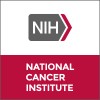
Ruxolitinib for Adult T-Cell Leukemia
T Cell LeukemiaAdult4 moreBackground: The human T-cell leukemia virus 1 (HTLV-1) causes adult T-cell leukemia (ATL). Infection does not immediately cause ATL, but it can develop over time. ATL is a rare and aggressive type of cancer that disrupts the body's ability to control the HTLV-1 virus. Infected T lymphocytes that are transformed by HTLV-1 into malignant ATL cell have constitutively activated Interleukin-2 (IL-2), IL-9 and IL-15 production pathways that function as autocrine and paracrine stimulators of these cells by stimulating these cells through the Janus Kinase (JAK) 1 and 3/Signal transducer and activator of transcription 5 (STAT5) pathways. Ruxolitinib is a drug that has been approved to treat bone marrow disorders. Ruxolitinib is a tyrosine kinase inhibitor that disrupts signaling through the JAK 1 and 2/STAT3 and 5 pathways and have potential as a treatment for ATL. Researchers want to see if ruxolitinib can be a safe and effective treatment for ATL. Initially this trial was designed as a single dose level phase II trial with ruxolitinib given at the dose approved for the treatment of primary myelofibrosis, post-polycythemia vera myelofibrosis and post-essential thrombocythemia myelofibrosis. Clinical and correlative laboratory data demonstrated limited inhibition and impact on the subject's disease with the standard 20 mg twice daily dose. Given that the manufacturers of ruxolitinib had safety data for administering ruxolitinib to normal healthy volunteers at doses up to 50 mg twice or 100 mg once daily, the trial was reconfigured as a phase I dose escalation trial giving these higher doses on the twice daily schedule Objectives: Initial Phase II design: Define clinical or objective response rate for the 20 mg twice daily dose of Ruxolitinib. Define safety profile, Time to progression and survival time. Subsequent Phase I dose escalation with expansion cohort treated at the MTD or MAD: Determine the maximum tolerated dose (MTD) and clinical response rate for ruxolitinib administered at the higher dose levels. Determine safety profile, time to progression To test the safety and effectiveness of ruxolitinib for adult T-cell leukemia. Eligibility: - Individuals at least 18 years of age who have ATL caused by HTLV-1. Design: Participants will be screened with a physical exam and medical history. Blood and urine samples will be collected. Imaging studies will also be performed. Participants will take ruxolitinib twice a day for 28 days. They will have blood tests on days 1, 14, and 28. These tests will look at the levels of HTLV-1 in the blood. Participants will have a final blood test about 2 weeks later. Treatment will also be monitored with imaging studies. Participants who have a partial response during treatment may be able to start taking ruxolitinib again after the final blood test. They will continue to take ruxolitinib for as long as it is effective and the side effects are not severe. Participants who have a full response during treatment will take ruxolitinib for 56 more days, and then stop treatment. If ATL returns, they may restart treatment and continue it for as long as it is effective.

Monoclonal Antibody Therapy Before Stem Cell Transplant in Treating Patients With Relapsed or Refractory...
Adult Nasal Type Extranodal NK/T-cell LymphomaAnaplastic Large Cell Lymphoma31 moreThis phase I trial studies the side effects and best dose of monoclonal antibody therapy before stem cell transplant in treating patients with relapsed or refractory lymphoid malignancies. Radiolabeled monoclonal antibodies, such as yttrium-90 anti-CD45 monoclonal antibody BC8, can find cancer cells and carry cancer-killing substances to them without harming normal cells. When the healthy stem cells from a donor are infused into the patient they may help the patient's bone marrow make stem cells, red blood cells, white blood cells, and platelets. Giving radiolabeled monoclonal antibody before a stem cell transplant may be an effective treatment for relapsed or refractory lymphoid malignancies.

Front-line Nilotinib Treatment of BCR-ABL+ Chronic Myeloid Leukaemia in Chronic Phase
Chronic Phase Philadelphia PositiveBCR-ABL Positive1 moreThe GIMEMA CML Working Party promotes a multicentre, observational, prospective study of CML patients treated frontline with NIL. Patients will be followed for 5 years. This study will help the definition of guidelines for the treatment of CML patients in early CP.

Decitabine and Midostaurin in Treating Older Patients With Newly Diagnosed Acute Myeloid Leukemia...
Acute Myeloid Leukemia (AML) With Multilineage Dysplasia Following Myelodysplastic Syndromein Adults7 moreThis phase 2 study evaluates the sequential combination of decitabine then midostaurin for the treatment of newly-diagnosed acute myeloid leukemia (AML) in older patients.

Gamma-Secretase Inhibitor RO4929097 in Treating Young Patients With Relapsed or Refractory Solid...
Childhood Atypical Teratoid/Rhabdoid TumorChildhood Central Nervous System Choriocarcinoma45 moreThis phase I/II clinical trial is studying the side effects and best dose of gamma-secretase inhibitor RO4929097 and to see how well it works in treating young patients with relapsed or refractory solid tumors, CNS tumors, lymphoma, or T-cell leukemia. Gamma-secretase inhibitor RO4929097 may stop the growth of cancer cells by blocking some of the enzymes needed for cell growth.

A Study of Idelalisib and Rituximab in Elderly Patients With Untreated CLL or SLL
Chronic Lymphocytic Leukemia (CLL)Small Lymphocytic Lymphoma (SLL)This study is to evaluate the safety and clinical activity of idelalisib alone and in combination with rituximab in patients with CLL or SLL. This Phase 2 study will be the first time that idelalisib is administered to previously untreated patients with hematologic malignancies. Idelalisib has demonstrated clinical activity as a single agent in relapsed or refractory CLL and SLL with acceptable toxicity, which supports its evaluation in previously untreated patients. The study population is limited to patients over 65 years of age because younger patients are generally appropriate for standard immunochemotherapy regimens that are highly active. Since the mechanism of action of idelalisib is distinct from rituximab, it is hypothesized that the combination will be more active than either agent alone. This study will establish initial safety and clinical activity of idelalisib in combination with rituximab in patients with CLL or SLL. Cohort 2 of this study will establish safety and clinical activity of idelalisib alone in subjects with untreated CLL or SLL.

Dasatinib and Cyclosporine in Treating Patients With Chronic Myelogenous Leukemia Refractory or...
Accelerated Phase Chronic Myelogenous LeukemiaChronic Myelogenous Leukemia3 moreThis phase I trial studies the side effects and the best way to give dasatinib and cyclosporine in treating patients with chronic myelogenous leukemia (CML) refractory or intolerant to imatinib mesylate. Dasatinib may stop the growth of cancer cells by blocking some of the enzymes needed for cell growth. Cyclosporine may help dasatinib work better by making cancer cells more sensitive to the drug. Giving dasatinib together with cyclosporine may be an effective treatment for CML.

Lenalidomide With or Without Rituximab in Treating Patients With Progressive or Relapsed Chronic...
Adult Nasal Type Extranodal NK/T-cell LymphomaAnaplastic Large Cell Lymphoma32 moreThis phase II trial studies how well giving lenalidomide with or without rituximab works in treating patients with progressive or relapsed chronic lymphocytic leukemia (CLL), small lymphocytic lymphoma (SLL), prolymphocytic leukemia (PLL), or non-Hodgkin lymphoma (NHL). Biological therapies, such as lenalidomide, may stimulate the immune system in different ways and stop cancer cells from growing. Monoclonal antibodies, such as rituximab, can block cancer growth in different ways. Some block the ability of cancer to grow and spread. Others find cancer cells and help kill them or carry cancer-killing substances to them. Giving lenalidomide together with or without rituximab may kill more cancer cells.

Azacitidine + Lenalidomide Combo in the Elderly With Previously Treated AML & High-Risk MDS
LeukemiaAcute Myeloid Leukemia (AML)1 moreThe purpose of the trial is to study how the elderly patients who have previously undergone treatment for acute myeloid leukemia and high-rRisk myelodysplastic syndromes, respond to a combined treatment with azacitidine and lenalidomide.

A Pilot Study of Decitabine and Vorinostat With Chemotherapy for Relapsed ALL
Acute Lymphoblastic LeukemiaPrecursor B-Cell Lymphoblastic Leukemia1 moreThis is a pilot study using decitabine and vorinostat before and during chemotherapy with vincristine, dexamethasone, mitoxantrone, and peg-asparaginase in pediatric patients with acute lymphoblastic leukemia (ALL).
